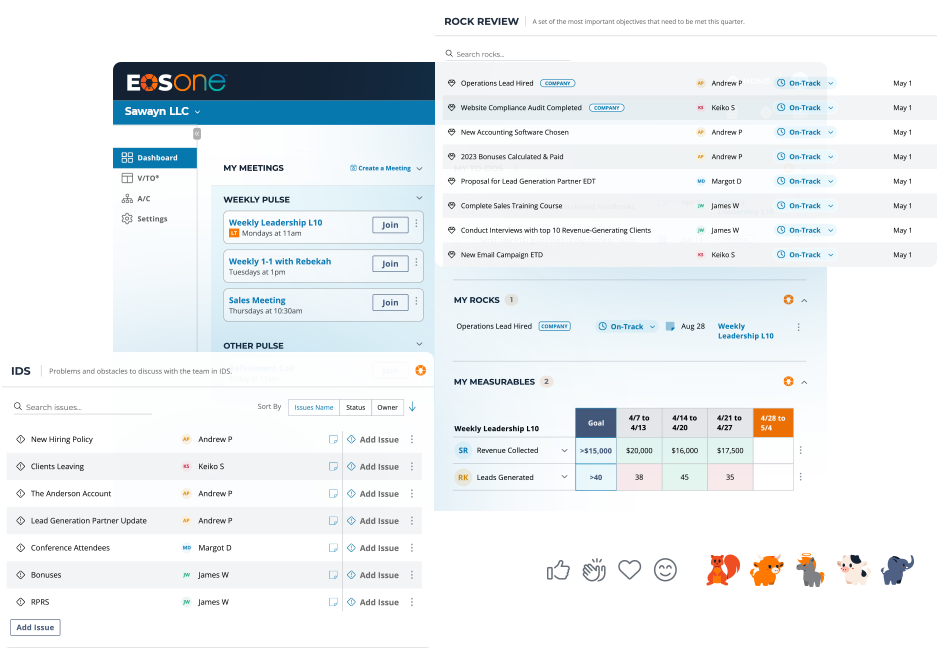Rocks are one of the most valuable tools in the EOS Process™, and every Rock needs to be SMART: specific, measurable, achievable, relevant and timely. But it’s not always clear what it is you need to measure when reporting on your Rock. Do you base it on the activity that went into the Rock, or on the outcome of the Rock?
Let’s say your leadership team needs to hire a new sales leader and get the person onboarded as soon as possible. As your team begins to make the Rock SMART, you need to write the Rock so that on the due date, you can simply say that it’s done or not done, and all be on the same page with the answer. But how do you determine whether the Rock is done or not?
Handpicked related content: Don’t Know If Your Rocks Are On-track?
There are two approaches to setting the Rock: the activity-based approach and the outcome-based approach.
Activity-based Rocks
Activity-based Rocks are measured by the activities that go into the Rock. For example, your leadership team may define the hiring Rock as “3 Sales Candidates Interviewed.” This is useful if your team believes you can’t control the outcome of hiring someone for the seat. So you define the activity in the hiring process that must be accomplished within 90 days, i.e., completing three interviews. Even if someone hasn’t been hired yet, the Rock is done.
Outcome-based Rocks
Some teams prefer to define their Rocks by an outcome that must be achieved. If the intent is to hire a sales leader, and the team agrees that it’s critical to get a sales leader in place right away, the outcome-based approach may be best. In this case, you will define your hiring Rock as “Sales Leader Hired.”
This doesn’t mean your team is naive to variables that are outside of your control. You realize there are external factors that can make it challenging to find the Right Person for the Right Seat. However, you prefer this approach because it clearly states what must happen this quarter, and you’re going to pull out all the stops to get the Rock done.
If you fail to complete an outcome-based Rock, you don’t have to beat yourselves up for a lack of trying. In fact, this is often why Rock completion is 80% or better for many teams. We aim for 100% completion, but when we fall short in scenarios like this and complete 80%+ of our rocks, we can still celebrate progress!
Which Is the Right Approach?
Both activity-based and outcome-based approaches work. There’s no one right way to do it. What’s important is that your team decides which approach aligns with your priorities, and to stick with it. This will simplify your Rock-setting process, and your team will move forward in lock step as a result.
Choose an approach, tell the team where your head is at, communicate your expectations, and decide!
Need help making decisions as a leadership team? You’re not alone! Master the principles of strong decision-making—download the ebook, Decide! by EOS® founder Gino Wickman.



